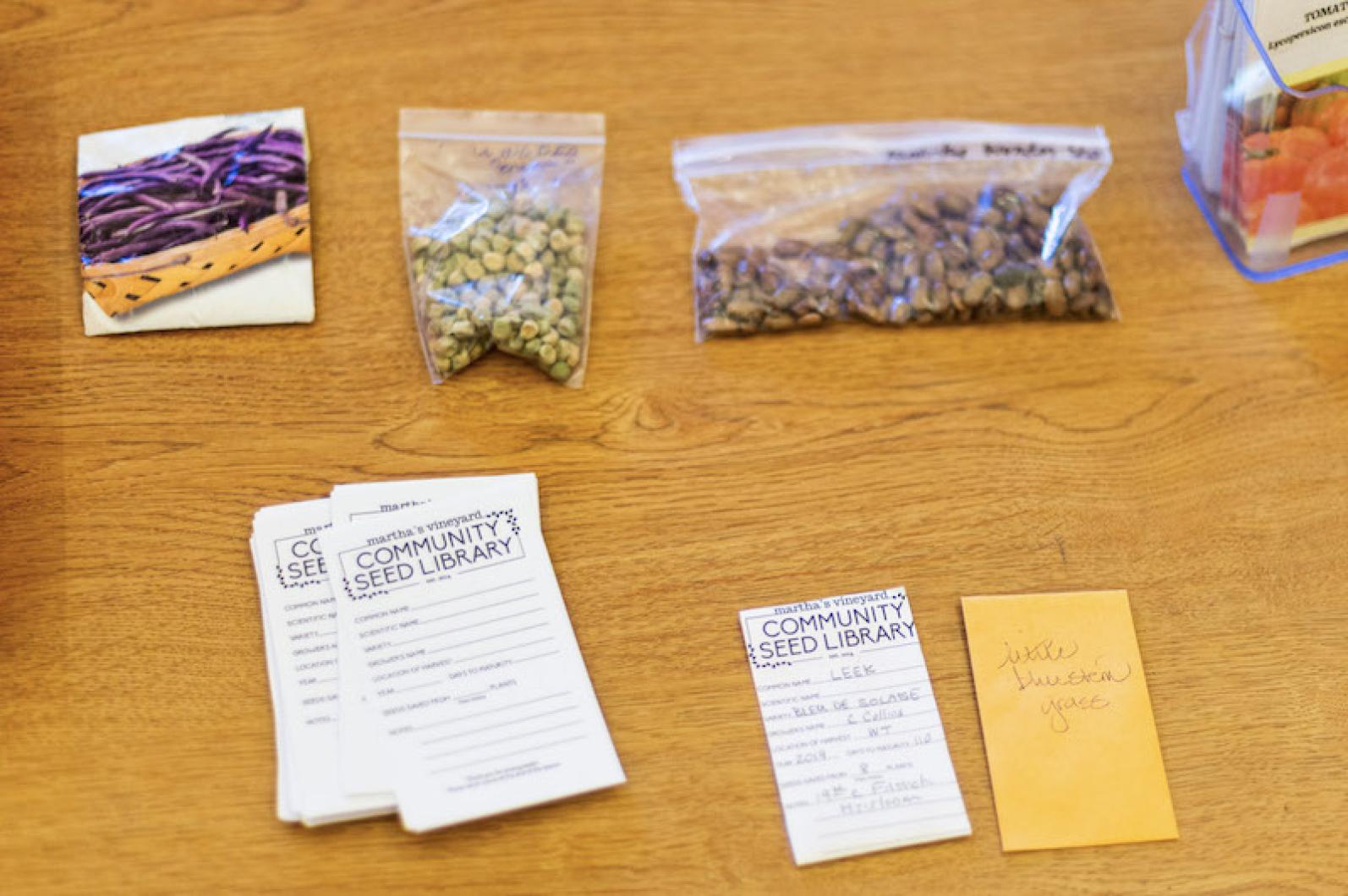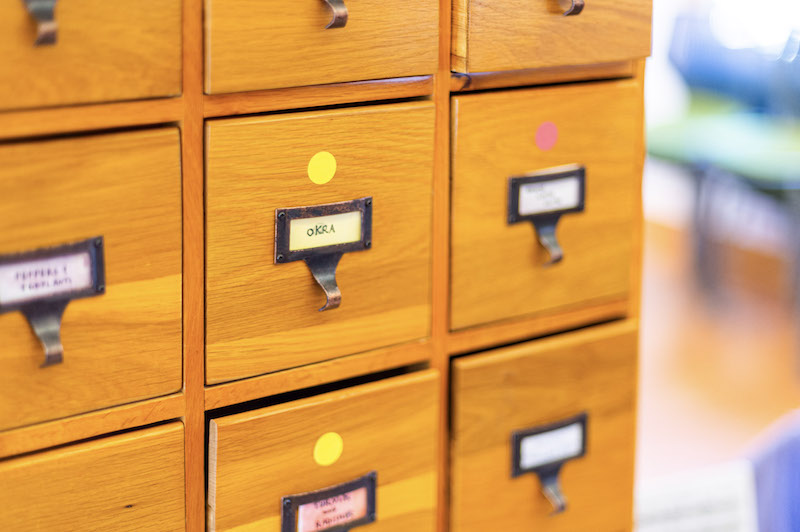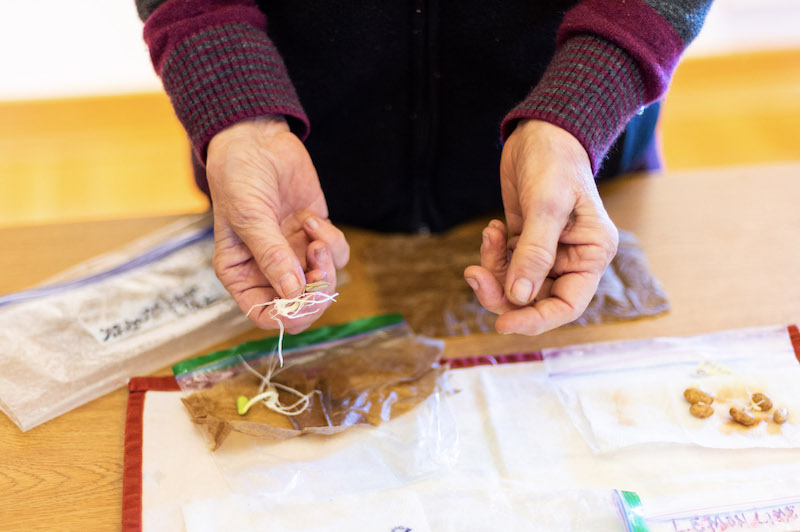Clinks and clatters permeated the West Tisbury library Saturday as spherical beads of coriander and oblong dried beans of the pinto and pole variety were transferred from glass jars to paper envelopes.
The sorting was part of Martha’s Vineyard Seed Library’s annual seed swap and volunteers were on hand to then take the envelopes filled with seeds and restock an old four-by-six card cabinet.
“We are here to celebrate seed diversity,” said Rebecca Sanders, one of the founding members of the seed library.
As part of its mission, Ms. Sanders said, the group helps supply local seeds to gardeners and hopes to encourage those same gardeners to save and contribute seeds back to the library. By building (or rather, rebuilding) the practice of seed saving on-Island, the group looks to create a more solid foundation for the Island food supply.
As organizer Carol Collins explained, the fundamentals of their approach are far from new.
“My parents used to save seeds. It was just what you did, so I’ve always done it,” she said.
In addition to saving money on buying seeds, seed saving has the added advantage of creating plant varieties more resilient to local conditions. By saving seeds from peak harvests each year over a long period, the genetic makeup best adapted to the Vineyard’s particular climate is isolated.
Proof of concept can be found, Ms. Collins said, with her Vineyard-adapted Roma tomato variety.
“Romas are supposed to get almost six hours of sun...but these are so prolific, and they only get four or five hours a day,” she said, adding that the home-grown variety is much less susceptible to blossom rot.
Seeds from her variety are available any time at the West Tisbury library, and seed deposits are always accepted.
Tomatoes are a good place for novice seed savers to start, said Janet Woodcock, as are beans and peppers. For these crops, a gardener simply picks the fruit of a particularly good specimen, dries the seeds and germinates them next year. For tomatoes and peppers, a gardener can even eat their harvest after the seeds are removed.
Some crops take a bit more effort.
“It’s taken me three years to do eggplant,” she said. “You let it grow and stay on the plant until it starts to look really gross.”
Each added day on the plant, she said, is another day for something to go wrong.
Other crops are a challenge to save seeds from due to their growth cycle, forcing gardeners to reckon with unfamiliar stages of the plant life cycle. Ms. Sanders used kale as an example. Since kale is a biennial, it needs to be grown for a second year before it produces seeds.
Ms. Sanders recommends that seed savers cordon off a specific part of their garden for their plants to grow out to their more mature stage, a process called roguing. She also cautioned growers to make sure their seeds are non-hybridized, open pollinated seeds, since hybrid variety seeds often do not reproduce true to form.
Though not all seed library users contribute their own stock, the group that gathered this Saturday is a group of true believers.
“You have the chance to be a part of something big,” Emily Meegan said to prospective savers, as she sorted out little half-moon seeds of calendula flowers from a pile of seed and chaff.
It is like a library where, upon returning a book, you have written another chapter for the next patron to read.











Comments (1)
Comments
Comment policy »